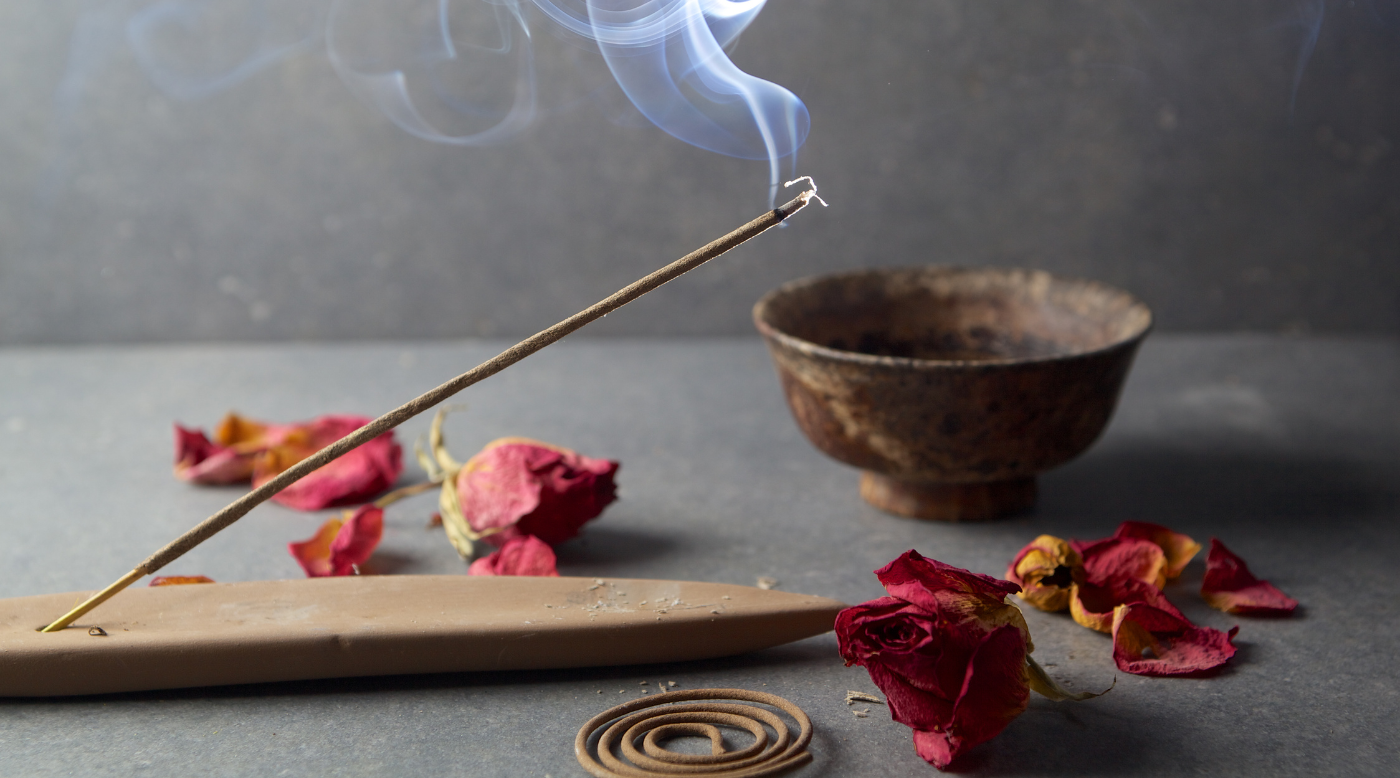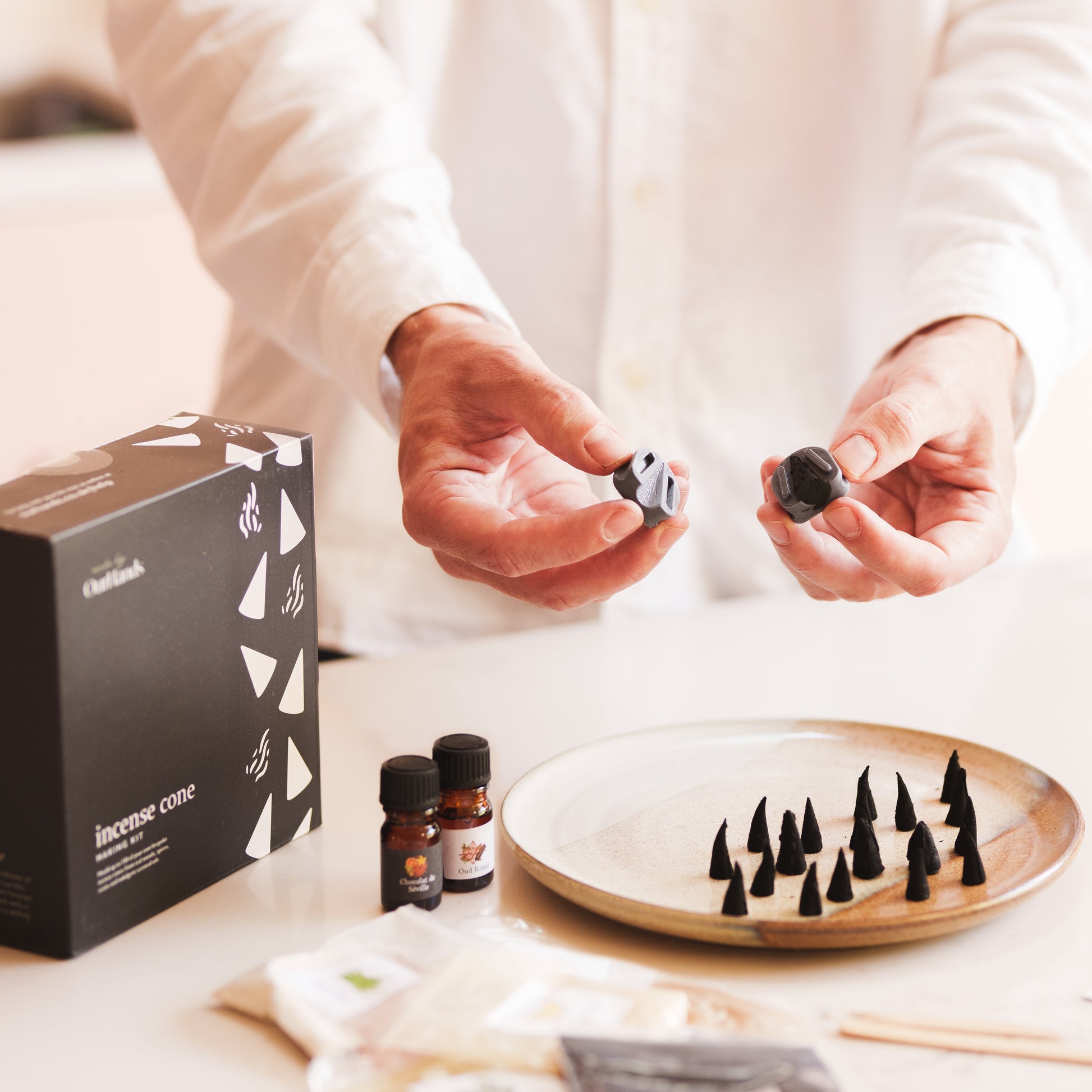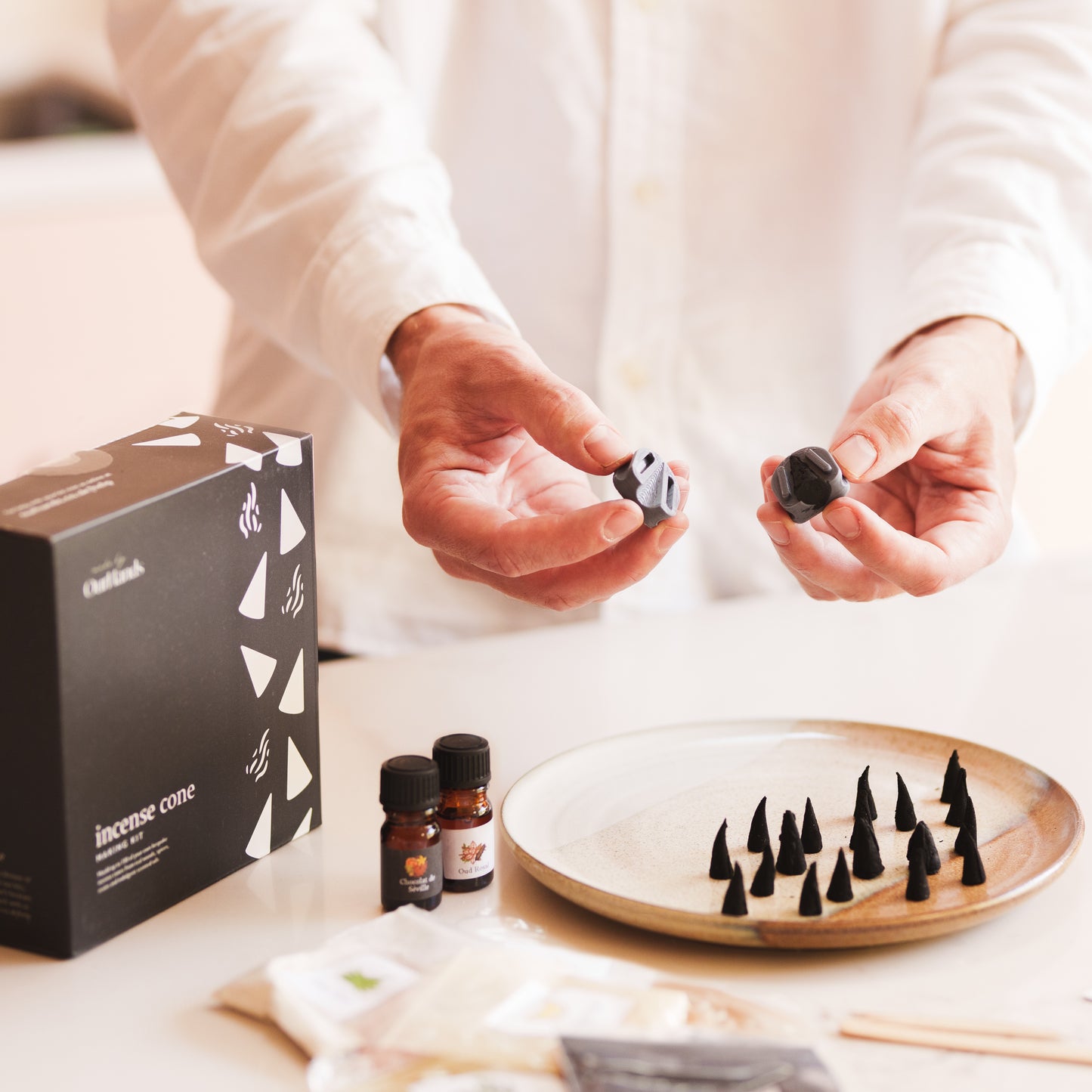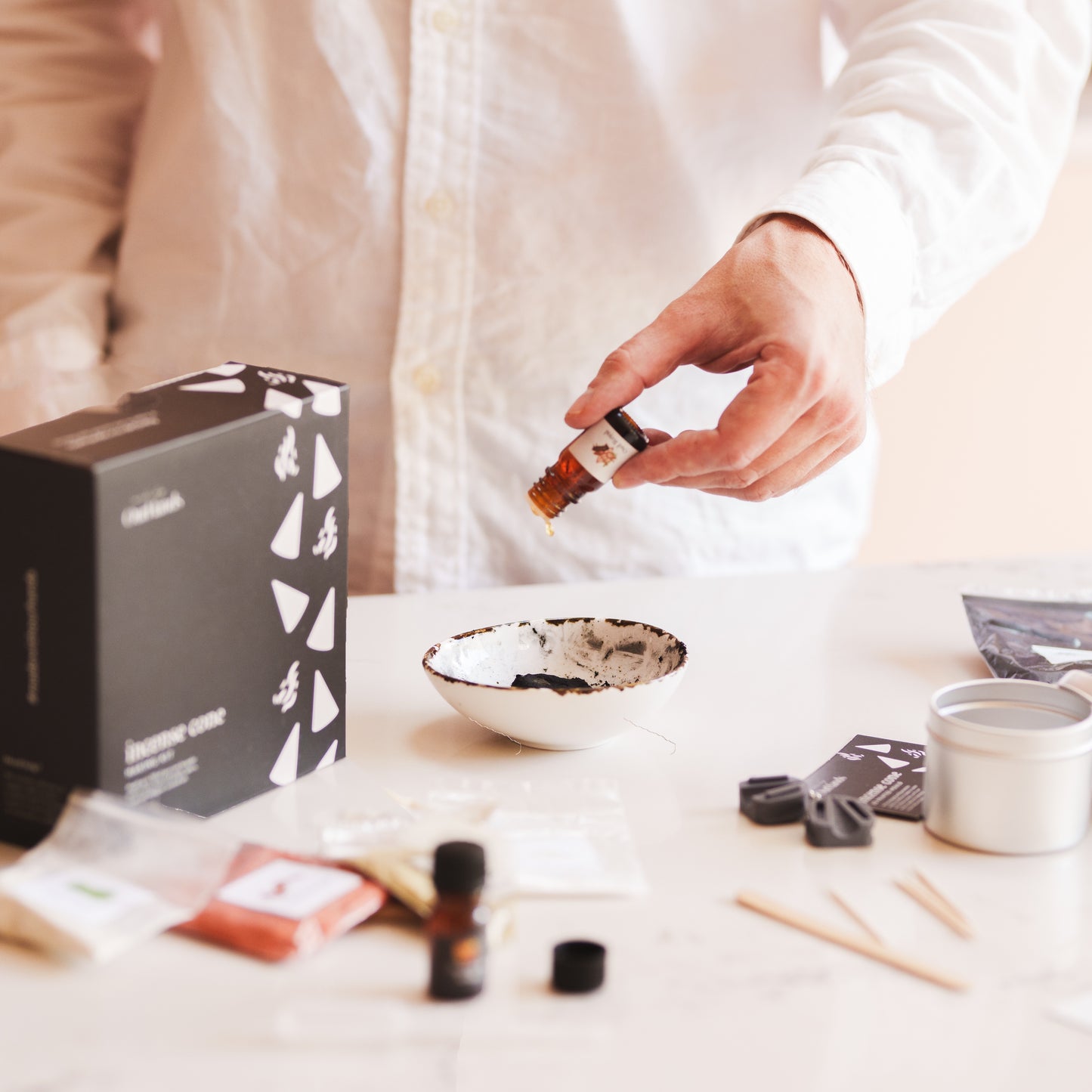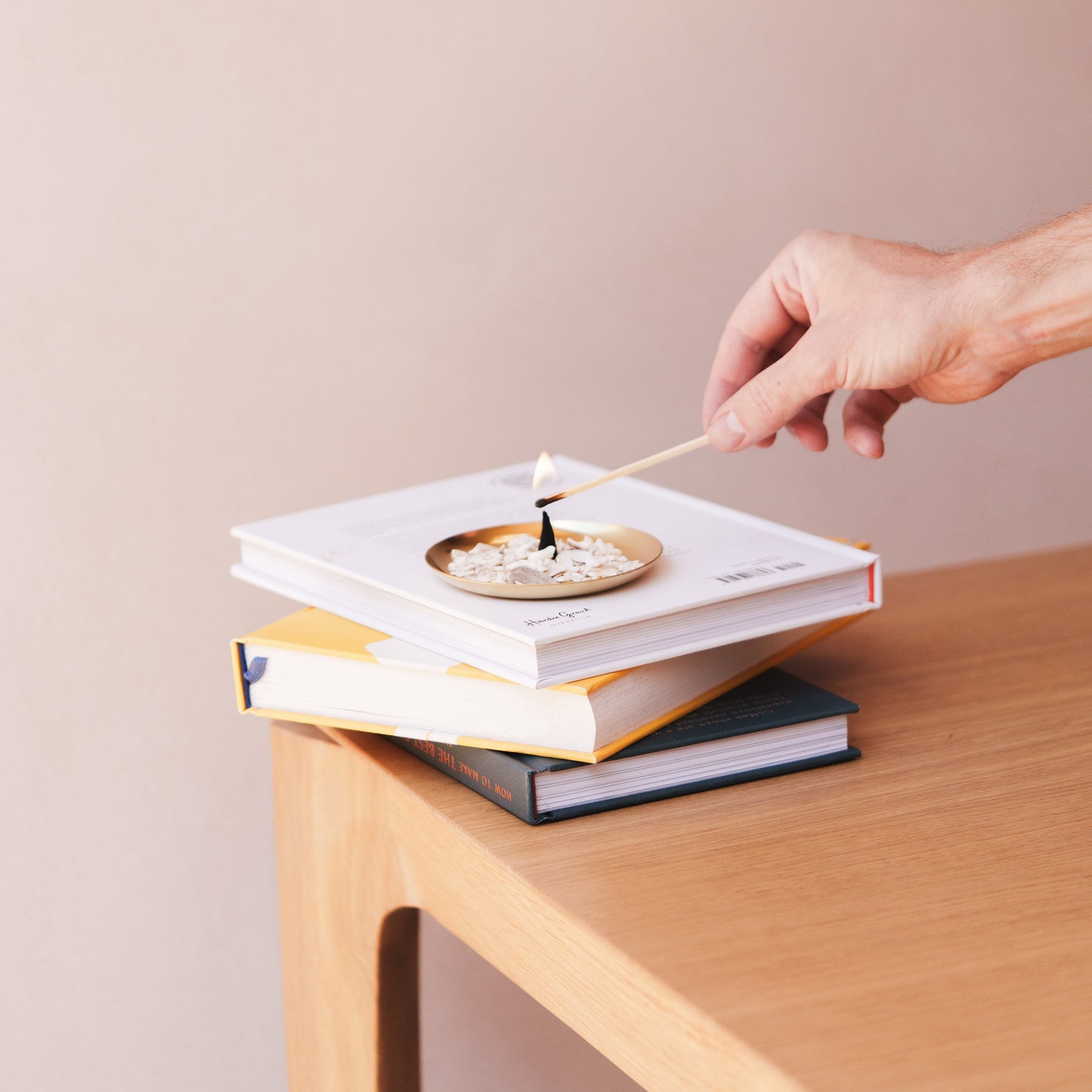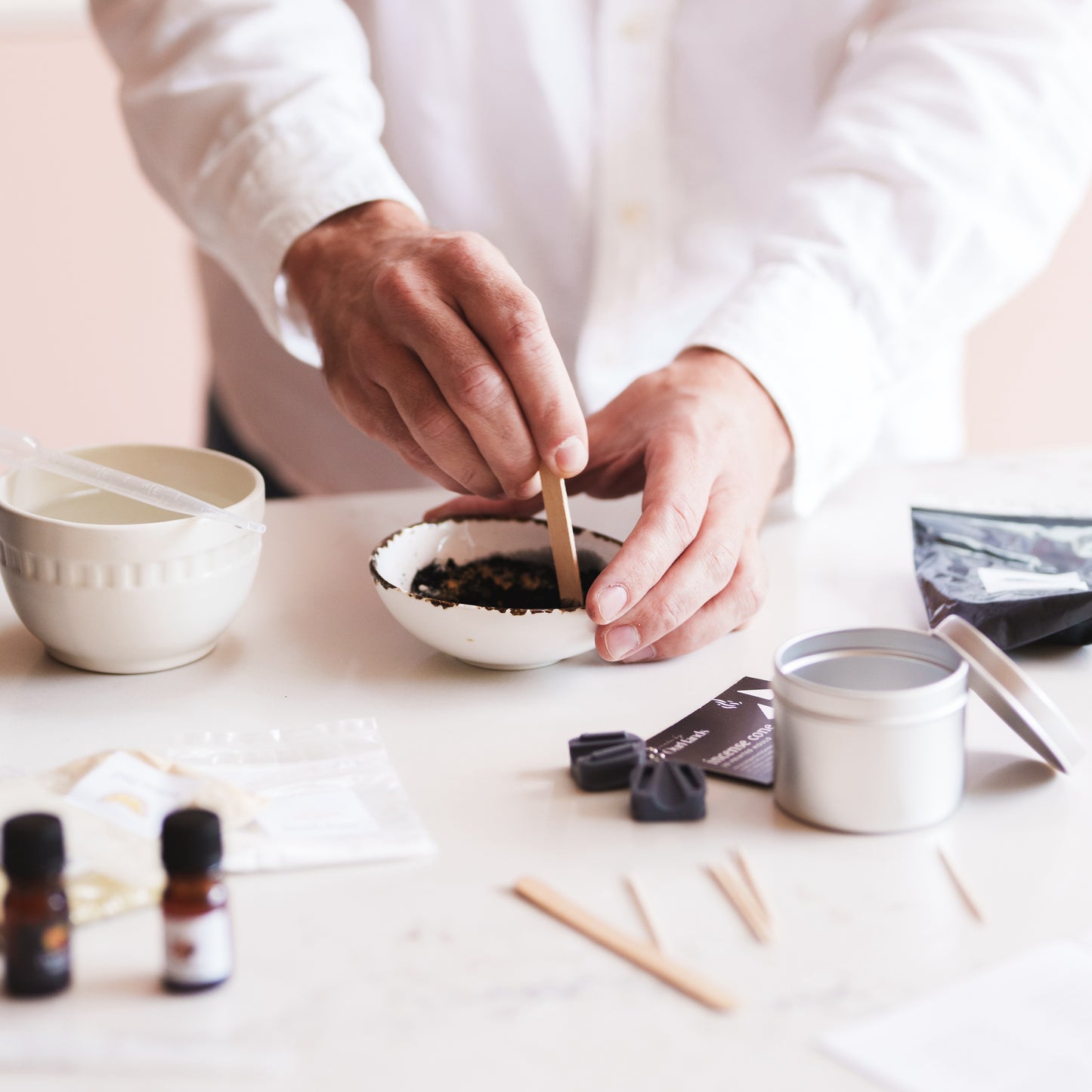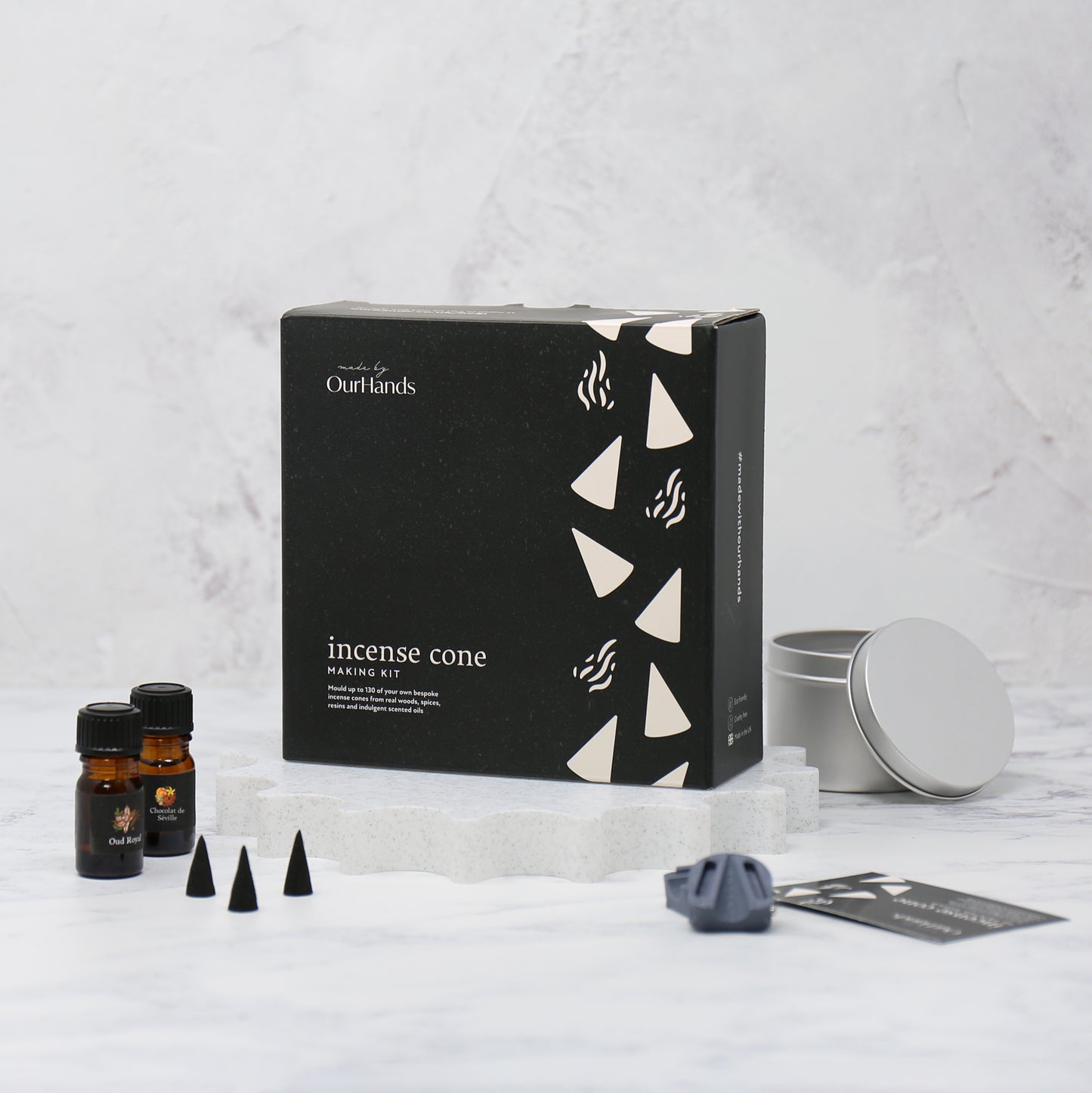Which incense is right for you? A guide to different types of incense
The history of incense is as long as it is fragrant. It started in Egypt and Ancient China, where incense was used during embalming rituals and religious rites. For centuries, its sweet cleansing scent helped to open up the senses and get closer to the divine.
Though incense is still used in religious practices around the world, its main purpose is now one of self-care. We might light some incense when feeling overwhelmed or in need of a break. Curled up with a book and a tea, watching the heavy smoke dance around the room as earthy fragrances fill the air, we can almost feel the same inner peace sought by incense burners all these centuries ago.
Whether you're looking for something to help you relax or you just want to have a peaceful, nice-smelling house, there is a type of incense that is right for you. Maybe you like the traditional feel of incense sticks or the delicate aesthetic of incense paper. In this article, we'll go over the different types of incense you can get, and try to determine which type of incense is right for you!

What are the different types of incense?
There are three main types of incense, each with its own characteristics. They are naturally quite similar in some ways (they are incense, after all!) but they each work differently.
Understanding Incense Sticks
If someone told you to close your eyes and picture some incense, you would probably think of incense sticks. It is one of the most popular types of incense, and for good reason! Light, portable, and fragrant, it is as easy to find as it is easy to use.
There are two main types of incense sticks: with a core, and without a core. Coreless incense is most common in China and Japan, where it is the most popular type of incense to burn. It is made from crushed incense ingredients that are carefully selected for their delicate fragrance and mixed with a binding agent so they can keep their shape. Water is then added so the mixture can be moulded into a long stick that is left to dry until it is ready to be burnt.
Coreless incense burns with minimal smoke and tends to have a subtler scent than other types of incense. It is perfect for people who want a fresh, discrete fragrance that is not too powerful or distracting.
Though incense with a core looks very similar to coreless incense, it is very different. Originally from India, where it remains the most popular type of incense to this day, incense with a core is also the easiest type of incense to find in the rest of the world. It is made by creating a mixture of water, incense ingredients, and essential oils. A thin bamboo stick is then repeatedly dipped into the mixture until it is covered in many fragrant layers. The bottom of the bamboo stick is left bare to make it easier to grab and set in an incense burner. The stick is then left to dry for a few days before it can be used. As the stick incense burns, so do its core and its essential oils, releasing a heavier smoke and a stronger scent. The smell of the burning core also adds woody notes that come underline the earthiness of the ingredients and the heavy scents of the essential oils.
Stick incense with a core burns longer than other types of incense, releasing more smoke and a deeper fragrance as it does so. It's a great type of incense for long, focused activities such as reading or meditating. Due to the use of wood and essential oils, the scent lingers for quite a long time inside a room.

Exploring incense cones
Incense cones are a good middle ground between the clean burn of coreless stick incense and the powerful fragrance of incense sticks with a core. They are made in a similar fashion as coreless incense sticks, by crushing incense ingredients with a binder agent and adding some water to create a paste that can be moulded into a cone shape. It is also comparable to incense with a core, as essential oils are frequently used to make incense cones smell stronger.
This in-between production method allows incense cones to burn quickly and cleanly while releasing an intense burst of fragrance that can linger for hours. As incense cones tend to burn a lot faster than incense sticks with about 10 to 20 minutes of burning time, it is a quick way to perfume your house while still giving you a mindful moment of watching the incense burn.
Due to their small yet strong shape, incense cones are also very easy to store and transport. Unlike incense sticks which need an incense holder to hold the stick in place and catch its ashes, incense cones can be burnt on any heat-proof surface, making them great to have in a pinch. Keep in mind that most incense cones will release some of their essential oils as they burn, so do make sure to use them on a surface that is stain-resistant and easy to clean!

Unveiling incense paper
As we've discussed before, there are two main types of incense paper.
Joss paper is used in China for religious and ceremonial purposes. It is typically printed to look like money, then burnt at funerals so the recently deceased has the means to prosper in the afterlife. It is made from coarse bamboo or rice paper, sometimes with a piece of foil in the centre. It is typically not used to scent a room like other types of incense, but it is too interesting and prevalent not to be mentioned!
The other type of incense paper (sometimes called Armenian paper) is very popular in both France and Japan. It is made by dipping thick high-quality paper into a bath of chemicals so that it will burn more slowly and reliably. Once dry, the paper is coated with essential oils, fragrance oils, or a tincture. Benzoin tincture is one of the most popular scents for incense paper, its sweet, almost medicinal scent making it perfect for quickly purifying a room.
Of all types of incense, incense paper burns the fastest, with about 5 to 10 minutes of burning time. The smell of the burning paper intertwines with the fragrance of the oils used and gives a lovely, complex cleansing smell. Incense paper is great to use when you want to quickly purify the air in a room and make it smell cosy and lived-in, for example at the end of a big clean, or just a few minutes before guests start arriving. Typically, incense paper is sold as simple strips of scented paper, making it incredibly easy to store and burn. The strips can also be stored at the back of wardrobes and cabinets to act as a discreet potpourri.

Which incense is right for you?
Now that we've discussed the different types of incense and their characteristics, you might be wondering which incense is the best for you.
The first thing you want to do is ask yourself what you are looking for in your incense. Every type of incense can be used to perfume a room, but they will each have their own advantages and disadvantages depending on your goal. Try to think about when you will want to use your incense, to do what and for how long.
The general rule with incense is that the longer it will burn, the more tricky it'll be to store and use. Different types of incense will also have different fragrance strengths. Let's review!
Incense sticks burn the longest, with a burning time of about 20 to 35 minutes. They are the most popular form of incense across the world and can be coreless or shaped around a thin bamboo stick. Due to their longer burning time, incense sticks can release their fragrance gradually over time, meaning their scent can be as powerful and subtle as needed. They do need to be burnt in an incense holder which will hold the sticks and catch their ashes. They also need to be stored carefully so they do not break.
Incense cones burn for a moderate amount of time, typically between 10 and 20 minutes. They are coreless chunks of incense ingredients and essential oils pressed into a cone, so they tend to release a more intense fragrance than their stick counterpart. They are quite solid and easy to store, and they can be burnt easily on any heatproof, stain-resistant surface.
Incense paper burns the fastest, with a burning time of about 5 to 10 minutes. It is made by soaking high-quality paper in chemicals, then coating it with a tincture or some essential oils to scent it. It is very easy to store and can be used as a potpourri inside drawers and cupboards. It's a great way of quickly purifying a room and can be used simply on a heat-proof, stain- resistant surface.

Inhale, Exhale, Enjoy
Now that you know more, we hope you have an easier time choosing the right incense for your home! Remember that there is no wrong way to buy incense and that you can always buy more than one type so you can use them depending on what you want to achieve.

